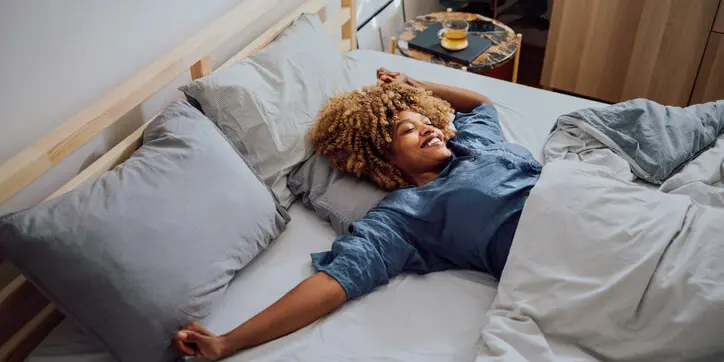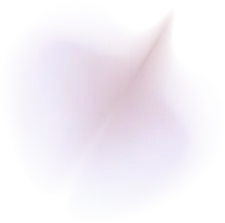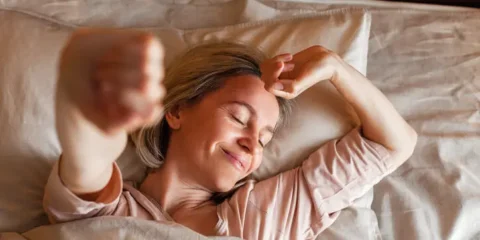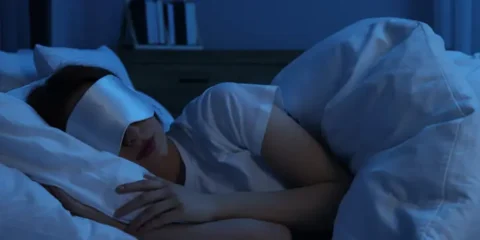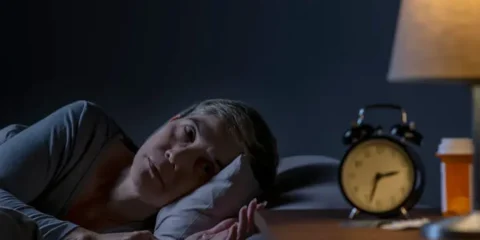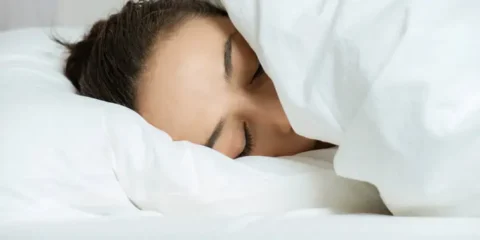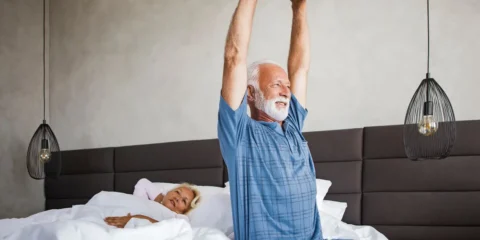An estimated 50-70 million Americans suffer from some type of sleep disorder, according to the American Sleep Association. Sleep disorders can significantly impact your daily life, leaving you fatigued, impaired, and at risk for other medical conditions.
At Allure Medical, we like to make sure that you understand what these sleep disorders are before you go for treatment. This guide will walk you through the various types of clinically diagnosable sleep disorders according to the DSM-5 (Diagnostic and Statistical Manual of Mental Disorders, Fifth Edition).
What are DSM-5 Sleep Disorders?
The DSM-5 is the authoritative guide published by the American Psychiatric Association that provides standard criteria for classifying mental disorders. Within the DSM-5, there are several categories related to sleep disorders:
- Insomnia disorder
- Hypersomnolence disorder
- Narcolepsy
- Breathing-related sleep disorders
- Circadian rhythm sleep-wake disorders
- Parasomnias
- Restless legs syndrome
These disorders involve dysfunctional sleep patterns that can significantly disrupt your physical health, mental health, and quality of life.
The Types of Sleeping Disorders According to DSM-5
Let’s take a closer look at the range of sleep disorder categories in the DSM-5:
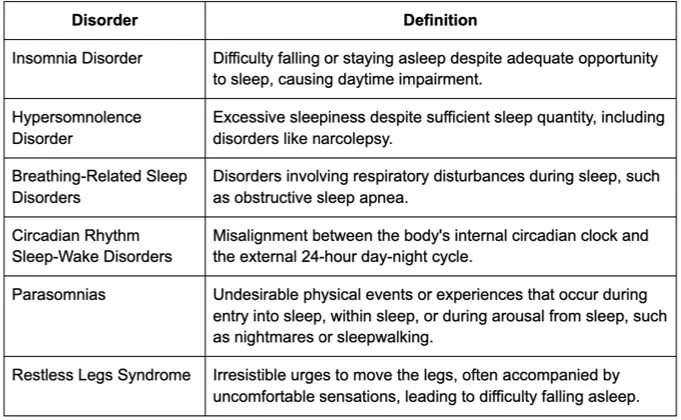
How the DSM-5 Classifies Sleep Apnea
One of the most common DSM-5 breathing-related sleep disorders is obstructive sleep apnea. This occurs when the muscles in the back of your throat relax during sleep, causing your airway to narrow or close, preventing normal breathing. Signs of sleep apnea as defined in the DSM-5 include:
- Loud snoring
- Gasping or choking during sleep
- Daytime sleepiness and fatigue despite sufficient sleep
- Difficulty concentrating
- Morning headaches
- Mood changes
To meet DSM-5 criteria for sleep apnea diagnosis, you must have at least 5 breathing disturbances during sleep per hour, accompanied by symptoms like daytime dysfunction.
Exploring NightLase® for Sleep Apnea
At Allure Medical, we offer NightLase® therapy to treat sleep apnea and snoring. This non-invasive treatment uses laser energy to tighten tissues in the throat, preventing airway collapse during sleep.
- Performed in-office with no anesthesia
- No oral appliances or masks required
- Treatments take 15 minutes
- Noticeable improvements after first session
- Reduces snoring and daytime fatigue
- Optimizes sleep for better health
Our sleep medicine team can help determine if NightLase® is right for you.
Understanding Hypersomnolence Disorder Per the DSM-5
Another DSM-5-defined sleep disorder is hypersomnolence, which involves excessive daytime sleepiness even when you get enough nighttime sleep. People with hypersomnolence disorder experience prolonged nighttime sleep episodes, yet still feel unrested during the day.
DSM-5 criteria for hypersomnolence disorder include:
- Sleeping for at least 10 hours at night but feeling unrested
- Recurrent daytime napping that provides relief
- Difficulty waking up after sufficient sleep
- Cognitive impairment that improves after napping
How the DSM-5 Categorizes Restless Leg Syndrome
Restless leg syndrome (RLS) is classified as a sleep-wake disorder in the DSM-5. It involves uncomfortable sensations in the legs accompanied by an irresistible urge to move them, especially at rest and during the evening hours. DSM-5 diagnostic criteria include:
- Urge to move the legs due to uncomfortable sensations
- Temporary relief with movement
- Worsening of symptoms at rest and in the evening
- Sleep disruption from symptoms
What Are Circadian Rhythm Sleep Wake Disorders Per DSM-5?
Circadian rhythm disorders occur when your internal body clock is misaligned with the external 24-hour day/night cycle. According to DSM-5 criteria, these include conditions where your sleep pattern is shifted earlier or later, irregular, or in a perpetual state of jet lag.
Specific examples include:
- Delayed sleep phase disorder – Extreme “night owl” pattern
- Advanced sleep phase disorder – Extreme “early bird” pattern
- Irregular sleep-wake pattern – Inconsistent/fragmented sleep
- Shift work disorder – Insomnia related to working overnight shift
- Jet lag disorder – Desynchronosis from air travel across time zones
How the DSM-5 Defines Insomnia
Insomnia disorder is diagnosed by the DSM-5 when you have persistent struggles with sleep initiation, duration, quality, or efficiency. This impairment results in daytime dysfunction despite adequate opportunity to sleep. Diagnostic criteria include:
- Difficulty falling or staying asleep
- Waking up earlier than desired
- Resistance going to bed
Understanding the Symptoms Associated with DSM-5 Insomnia
Insomnia can manifest in various sleep-related symptoms according to DSM-5 criteria:
- Difficulty falling asleep at bedtime – Taking 30 minutes or longer to fall asleep
- Frequently waking up during the night – Waking up 3 or more times per night
- Waking up earlier than desired – Waking up much earlier than your ideal wake time
- Feeling unrested despite sleeping – Not feeling refreshed despite adequate duration of sleep
- Daytime fatigue and sleepiness – Persistent drowsiness and lack of energy during the day
- Difficulty concentrating – Impairment in focus, attention, and memory
- Mood disturbances – Increased irritability, anxiety, or depression
If you regularly experience these insomnia symptoms, it’s time to seek help so you can get the restorative sleep your mind and body needs.
The DSM-5’s Diagnostic Criteria for Narcolepsy
Narcolepsy is defined in the DSM-5 as a central nervous system hypersomnia disorder characterized by excessive daytime sleepiness and manifestations of REM sleep at improper times. Diagnosis requires meeting the following criteria:
A) Daily periods of irrepressible need to sleep or daytime lapses into sleep occurring for at least 3 months.
B) The presence of at least one of the following:
- Cataplexy – episodes of sudden loss of muscle tone triggered by emotion
- Recurrent sleep paralysis
- Hypnagogic hallucinations – vivid auditory/visual hallucinations while falling asleep or waking up
C) Sleep latency of less than or equal to 8 minutes or REM sleep occurring within 15 minutes of sleep onset on a polysomnography (sleep study)
D) The hypersomnia is not better explained by another sleep disorder, medical or psychological disorder, medication, or substance use.
We Hope This Helps You Recognize and Treat Your Sleep Disorder
If you see yourself reflected in any of these DSM-5 sleep disorder descriptions, the compassionate team at Allure Medical is here to help. Treatments like NightLase® therapy can help improve sleep and reduce snoring and sleep apnea.
Sleep is foundational for physical, mental and emotional health. You deserve to get the restorative rest you need to live your best life.
Contact us today to schedule your appointment – we’ll work together to improve your sleep so you can awaken refreshed and inspired. The road to better sleep starts here!


